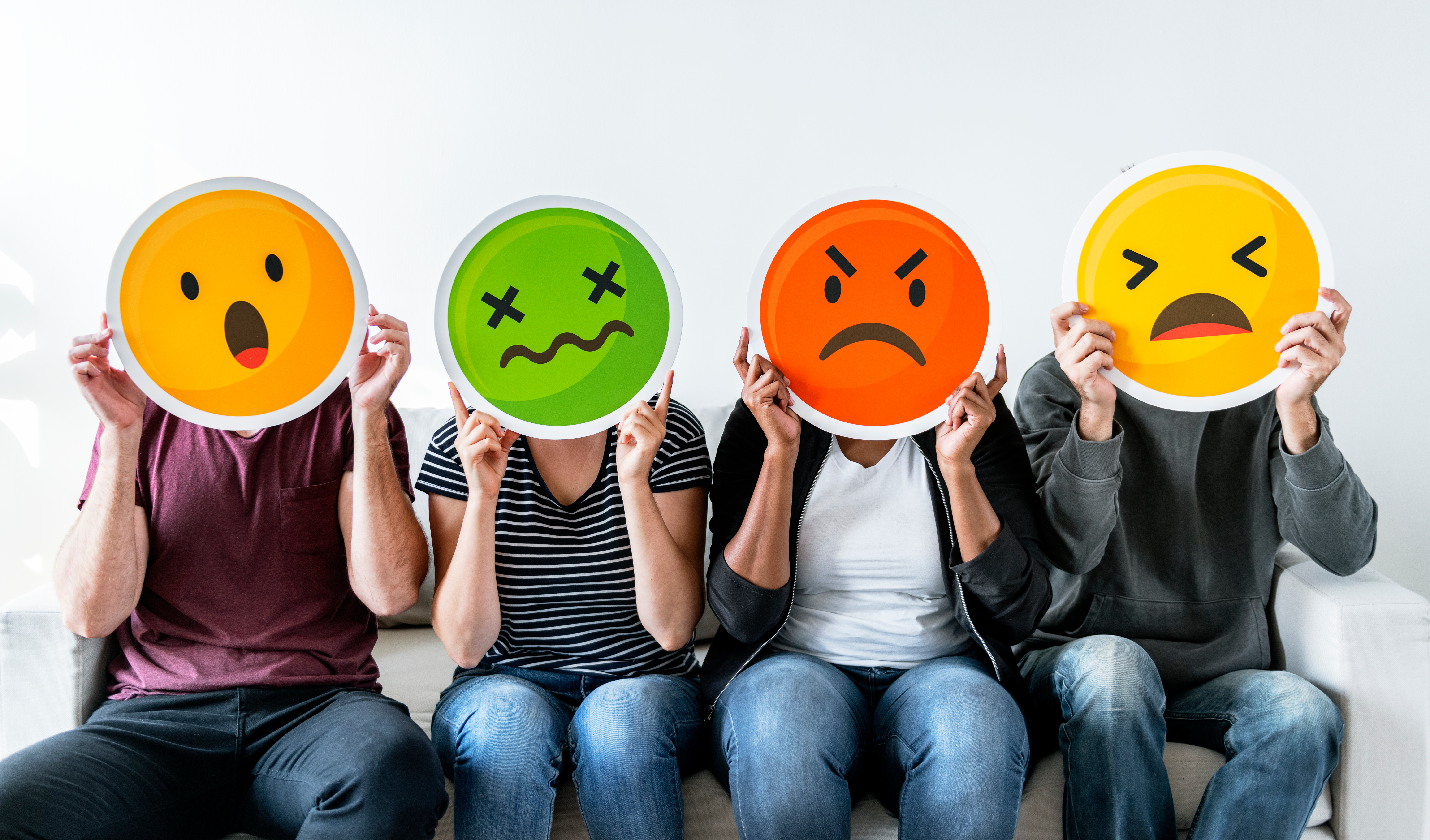What Your “Bad” Emotions Can Do for You!
Becca Samelson-Webb, M.A.

“It’s not a big deal, calm down!”
“Don’t cry, it’s okay!”
“Don’t get angry at me!”
“You should be happy!”
Sound familiar? Whether you realize it or not, you’ve probably said something like this to a friend or family member. We naturally want to comfort people when they seem upset. For example, if your child is crying because he didn’t make the football team, you might try to soothe him with, “Oh honey, don’t cry. It’s all going to be okay.” Motivated by love, you’re trying to ease his pain.
But what you may not realize is that you’re also sending an unstated message: what you’re feeling is wrong and you shouldn’t feel that way.
This is how many of us come to label emotions as “good” or “bad.” Happiness and love are seen as “positive,” while anger, sadness, and fear are viewed as “negative.” It’s no surprise, then, that we try to avoid uncomfortable emotions and chase after the “good” ones.
However, when we suppress or avoid painful emotions, it can make things worse. Instead of learning to manage and understand these emotions, we end up emotionally stunted, unsure of how to cope with difficult feelings when they arise.
But here’s the truth: emotions are neither good nor bad. They all serve a purpose. While some emotions may feel uncomfortable, they can still be incredibly valuable. So what can your so-called “bad” emotions actually do for you?
Anger
Anger often arises when you or someone you care about feels hurt, threatened, or wronged. People tend to associate anger with aggression or defiance, but is anger itself the problem? Absolutely not.
At its core, anger signals that something is wrong and needs attention. Many important social movements—from fighting for civil rights to addressing gender inequality—have been fueled by righteous anger. Anger can motivate action, whether it’s standing up for yourself, challenging injustice, or pushing for change.
Sadness
Sadness typically comes when you experience loss, unmet expectations, or disappointment. While it’s painful to feel, sadness helps you process those experiences. Instead of burying your
feelings, sadness encourages you to reflect on what went wrong, how you were impacted, and what really matters to you.
Acknowledging sadness allows you to accept reality, learn from setbacks, and clarify your values. It teaches us about our vulnerabilities, enabling us to grow and find meaning even in painful experiences.
Fear
Fear helps protect us from harm, whether emotional or physical. While too much fear can paralyze us and prevent growth, having no fear at all would leave us vulnerable to danger. An excess of fear can hold you back from trying new things or taking risks but without fear, you wouldn’t take basic precautions like wearing a seatbelt or locking your doors. Fear helps you recognize threats and motivates you to protect yourself. In many ways, it’s a tool for survival, pushing you to prepare and act in ways that safeguard your well-being. Fear keeps us alert to potential threats and motivates us to prepare and protect ourselves.
Disgust
Disgust is an instinctual reaction to things that may be harmful, like rotten food or filth. But it can also arise in response to people’s actions, words, or values. If something feels morally repugnant, it’s natural to feel disgusted.
This emotion helps us steer clear of things that could contaminate or harm us—whether physically or emotionally.
Guilt and Shame
Guilt and shame are often confused, but they serve different functions. Guilt comes from believing you’ve done something wrong, while shame comes from believing you are wrong or unworthy.
When warranted, these emotions help guide us toward positive change. Guilt motivates us to correct harmful behaviors. Shame, in small doses, can highlight areas where we want to grow, showing us where we fear rejection or disapproval.
However, unwarranted guilt or shame can be damaging, especially when we mislabel actions or characteristics as “bad.” This can lead to isolation, self-criticism, and a fear of being truly seen. When we work through guilt and shame, we allow ourselves to connect more authentically with others and become more self-accepting.
In conclusion, just because certain emotions feel uncomfortable doesn’t mean they’re “bad.” And just because some emotions can lead to harmful actions doesn’t mean the feelings themselves are wrong or unjustified. By acknowledging and embracing all of your emotions, you can better understand yourself, grow from your experiences, and ultimately live a fuller, more balanced life.



